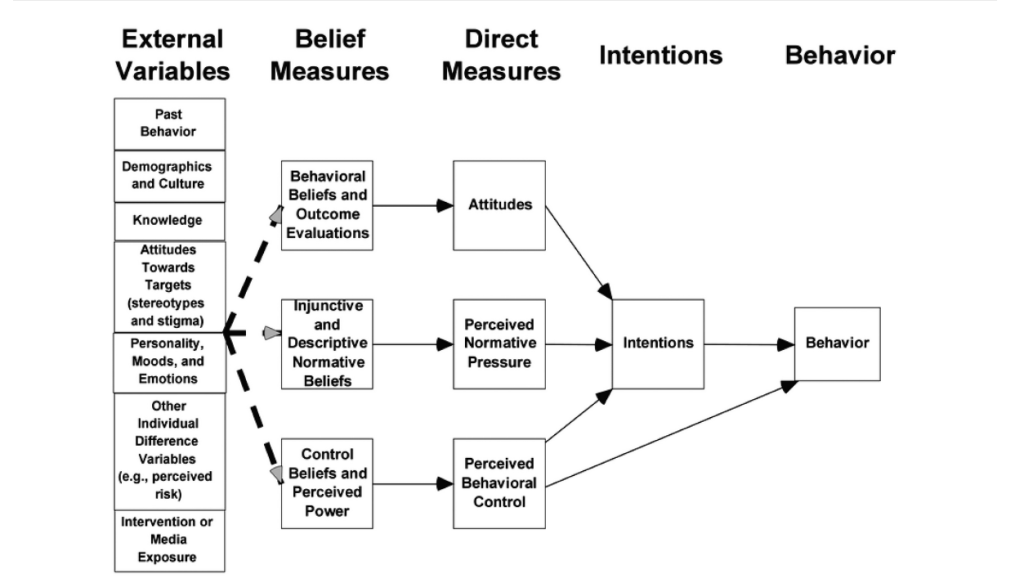#37 – The 3Ms Do you depend on your phone?
Episode host: Linda Snell.

Episode article
Mayl, J. J., Vaala, S. E., Patel, P. V., Ritter, M. B., & Richardson, K. M. (2023). Media Multitasking in Medical Students: A Theory-Based Approach to Understanding this Behavior. Teaching and Learning in Medicine, 35(3), 265–276. https://doi.org/10.1080/10401334.2022.2056742
Enjoy listening to us at your preferred podcast player.
In this episode, the papers podcast team reviews a paper that explores media multitasking among medical students. The paper applies a theory-based approach to understand the beliefs and factors that influence multitasking behavior and its impact on academic performance. The team discusses the strengths and weaknesses of the paper, the use of theory and methods, and the relevance and usefulness of the findings for health professions education. Tune in to hear their lively and insightful conversation.
Episode Notes
The topic of media multitasking has been a subject of interest for many years, and it’s no surprise that it’s a concern for educators. The authors of the article “Media Multitasking in Medical Students: A Theory-Based Approach to Understanding this Behavior” define media multitasking as the use of technology for non-educational purposes while engaged in educational activities. They also introduce alternative terms such as “cyber slacking” or “digital distraction” to describe this behavior.
Research has shown that media multitasking can have a negative impact on academic performance, including grades, tension, recall, and use of risky behaviors. It can even affect the people who sit next to the multitasker. But why is this the case?
Cognitive bottlenecking is a central process where people are hampered when they try to perform two tasks at once. When you introduce a secondary task, the first task has decreased attention, and when you switch between these tasks, there is a latency period where you’re concentrating on the first one, even though you’re supposed to be looking at the second. This means that students who engage in multitasking behavior are actually task switching rather than multitasking, which can be detrimental to their academic performance.
Jon’s comment:
Multitasking is a real phenomenon, but we need to be cautious about it. Rapid task switching can lead to a loss of fidelity of information. However, if one of the tasks can be automated, then multitasking can be possible. For example, you can listen to background music while studying, as long as the music doesn’t require cognitive load.
In a lecture, your cognitive load is probably at a maximum, so rapid task switching can be detrimental to learning. However, if you were attending to complementary information that is well aligned with the lecturer’s presentation, you might be able to hack your working memory. According to Meyer’s theory of multimedia, you have two parallel tracks in your working memory: one for visual and one for auditory information. If you get a complementary image to balance out what you are hearing your lecturer talk about, you might be able to learn more effectively.
In summary, multitasking can be possible if one of the tasks can be automated and doesn’t require cognitive load. However, in a lecture, rapid task switching can lead to a loss of fidelity of information. If you want to multitask, try to find complementary information that is well aligned with the lecture’s presentation. This can help you learn more effectively.
Method
Authors decided to use the integrative model of behavioral prediction theory the IMBP theory, and it really there’s a very nice diagram in the paper. It looks at behavior and says behavior relates to intentions. Intentions are influenced by attitudes. The Integrative Model of Behavioral Prediction (IMBP) is a theory that examines the relationship between behavior and intentions. The model proposes that behavior is influenced by attitudes, normative pressure, behavioral control, and beliefs, which are in turn influenced by various variables such as past behavior, knowledge, culture, and more. The IMBP is a general theory of behavioral prediction that is assumed to be applicable to the understanding of any given behavior.

The effects of media multitasking in medical students (MMM) are not known. The authors “sought to quantify the extent of media multitasking(MM) among a cohort of 1st and 2nd year medical students, explore factors that are associated with the extent of media multitasking during class when participating in person or asynchronously online, and to explore the relationships between reported media multitasking and academic performance.” They use the IBMP to analyze course and cognitive factors influencing MMM (media multitasking in medical students)
Their hypotheses are:
H1: Media multitasking in lecture will be commonly reported among medical students at our institution.
H2: Student cognitions about media multitasking will be more predictive of behavior than demographic or course-related factors. RQ1: Which class of cognitions is most associated with the extent of media multitasking in lecture?
H3: Academic performance will be negatively related to reported media multitasking behaviors in lecture.
Method
Survey questions reflect IMBP theory authors to quantify MM behaviors and elicit salient behavioral, normative, and control beliefs regarding MM in class. Authors linked MMM with average and block grades to evaluate the potential academic impact of the behavior. Descriptive stats and bi and multivariate
Results/Findings
MMM was common (in 119 of 305 students), but not related to course grades; was driven by an interplay of beliefs about the behavior (expectations of boredom) and specific course factors (in person attendance). In the hierarchical regression model, concerns about boredom were the major cognitive belief underlying behavior.
The authors conclude “this study represents an innovative approach to applying a behavioral framework to understand beliefs regarding MMM and the interplay between those beliefs, course factors, and students’ MM behavior. Given links between MMM and impaired learning, encouraging students to reduce this behavior may be beneficial The theory suggests examination of cognitive predictors of a behavior before designing a behavior change intervention. E.g., interventions targeted at reducing expectations of boredom by increasing engagement may be most effective in this population.
Comments
Let’s go back to theory – ‘lens to see phenomenon’ , and theoretical framework – how theory is used in study. Did our authors do this?

0 comments